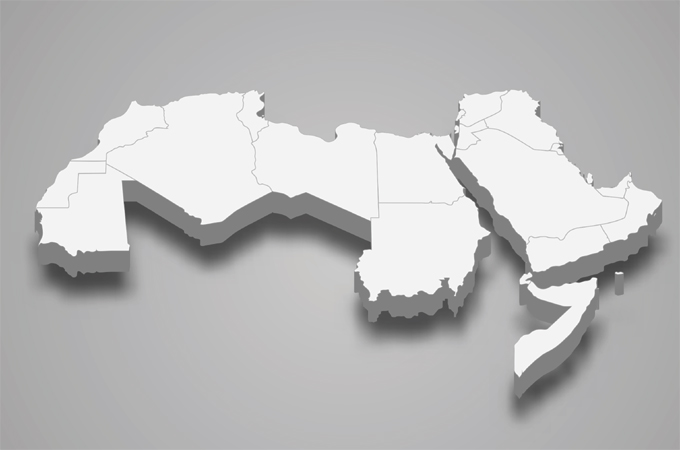Growth is projected to rise in the Middle East and North Africa in 2025 and 2026, but at a slower pace than anticipated earlier, says a new report from IMF.
Across the region, rising trade tensions and policy uncertainty are adding to the impact of conflicts and extended oil production cuts to weaken growth prospects.
In the Caucasus and Central Asia, growth has been robust but is set to moderate to a more sustainable pace. Policymakers must adapt to the new environment, prioritizing macroeconomic stability and accelerating structural reforms to seize global opportunities.
"The Middle East and North Africa economies face growing uncertainty amid shifting global geopolitics, trade tensions, and weakening international cooperation. These global developments, combined with regional challenges such as conflicts and political instability, pose significant risks to economic stability," says IMF’s May 2025 Regional Economic Outlook: Middle East and Central Asia.
The global economy’s recovery from the multiple negative shocks of recent years appears increasingly fragile and vulnerable to new risks.
Increased geopolitical fragmentation, rising trade tensions, and weaker international cooperation are generating extraordinary uncertainty that is weighing on global economic prospects, with expectations of weaker growth and wider economic imbalances than foreseen at the time of the October 2024 Regional Economic Outlook: Middle East and Central Asia.
The spike in global economic uncertainty in the first months of 2025 is starting to affect the economies of the Middle East and North Africa (MENA) and Caucasus and Central Asia (CCA) regions through subdued energy prices and tighter external financial conditions, the report notes.
Global factors play a key role in affecting domestic uncertainty for these economies, amplifying important regional sources of uncertainty, including ongoing conflicts, pockets of political instability, and vulnerability to severe changes in climate conditions.
In the MENA region, growth is estimated to have slowed in 2024. In oil-importing economies, conflicts weighed on some countries. Oil-exporting economies successfully navigated a complex and uncertain economic landscape, aided by ongoing diversification efforts, despite reduced oil activity because of extended OPEC+ voluntary production cuts.
Growth is still projected to increase in 2025 and 2026, but at a considerably slower pace than anticipated last October as spillovers from escalating global trade tensions and heightened uncertainty add to a more gradual resumption of oil production (after the extension of OPEC+ voluntary production cuts and tighter sanctions on the Islamic Republic of Iran), lingering effects of conflicts in the region, and slower-than-expected progress in implementing structural reforms in some economies. Inflation is projected to continue to decline gradually over the medium term, remaining elevated only in a few cases.
Economies in the CCA region experienced robust output growth in 2024, exceeding the October 2024 REO projections, mainly because of stronger and longer-than-anticipated positive spillovers on domestic demand from Russia’s war in Ukraine. These effects are expected to normalize over the next few years and, together with plateauing hydrocarbon production growth and smaller fiscal stimulus, are expected to lead to a slowdown in CCA economic growth. Inflation has been trending down for most economies and is projected to generally remain within established targets over the medium term.
The risks to the outlook remain to the downside. The main downside risks are a resurgence of conflicts and persistently heightened global uncertainty, particularly related to changes in tariffs and potential trade dislocations that could stifle domestic and external demand and further tighten financial conditions and weaken the oil sector.
IMF said its analysis shows that spikes in uncertainty triggered by global shocks are associated with large and persistent output losses in both the MENA and CCA regions. If the sharp rise in uncertainty since early 2025 continues, it could lead output to fall about 4.5 percent below its original trend after two years for the average economy in the MENA and CCA, it said.
There are also some upside risks: a swift and sustainable resolution of conflicts in the region and more effective implementation of structural reforms could lead to a greater-than-projected improvement of economic prospects in the near and medium terms.
Amid such exceptionally high uncertainty, policymakers face the difficult task of mitigating short-term risks while rebuilding economic buffers and simultaneously pursuing medium-term growth prospects. Strengthening fiscal sustainability and safeguarding price stability become even more important amid potential new adverse shocks to growth and financial conditions, it said, emphasising macro-stability will require avoiding costly and difficult-to-reverse fiscal support to sectors or firms adversely affected by new protectionist measures.
A more appropriate response would involve accelerating structural reforms to strengthen international competitiveness and attract foreign direct investment in non-extractive industries. Diversifying away from traditional trade partners and commodities while deepening cross-regional integintegration will strengthen resilience to external shocks.
Strengthening governance and institutional frameworks will enhance the capacity to respond effectively to increased uncertainty. While governance reforms are essential for laying the groundwork for reconstruction and stabilization in conflictaffected economies, new forms of international cooperation involving regional stakeholders will be vital to secure the extensive financing needed for reconstruction and humanitarian support amid dwindling external financing, including international aid, the report said. - TradeArabia News Service































